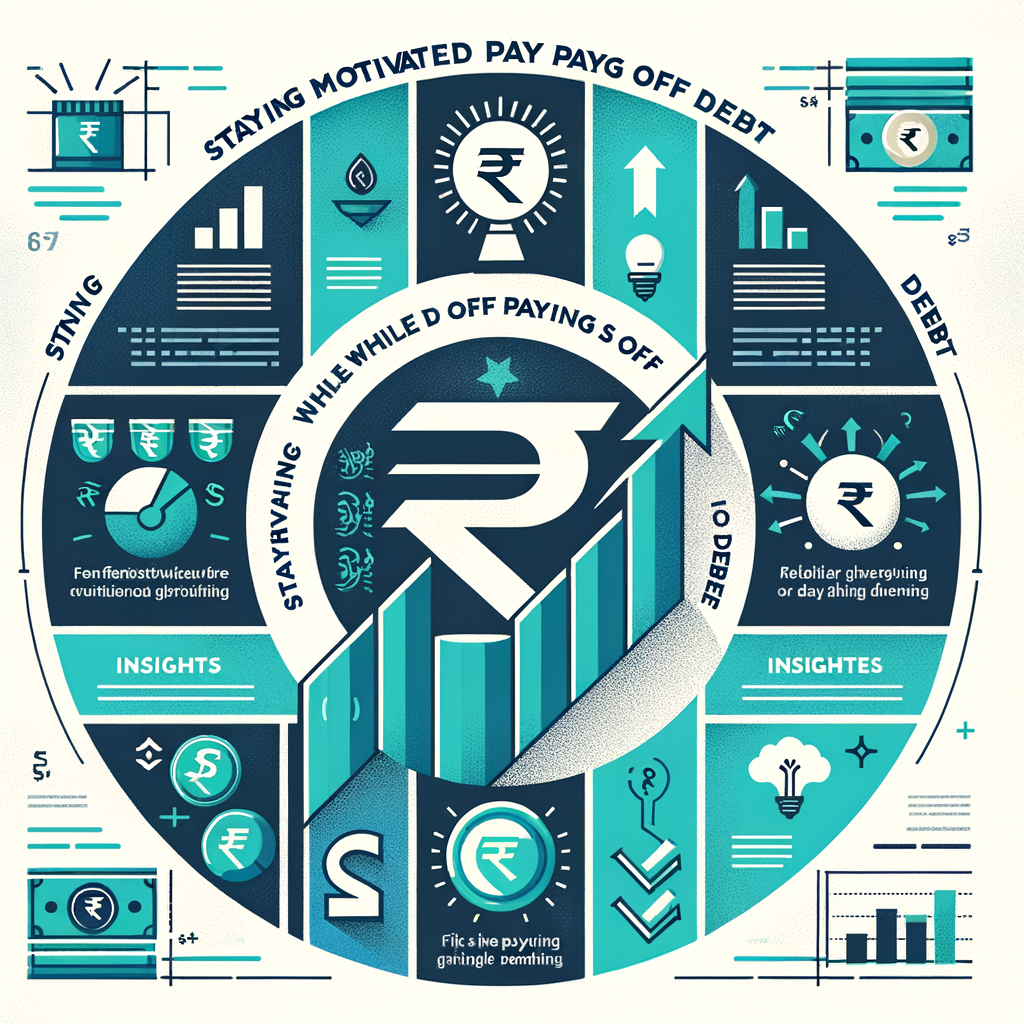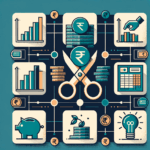Staying Motivated While Paying Off Debt: Success Stories and Tips
The constant notifications for EMI debits, the ever-present weight of credit card bills, and the stress of managing personal or business loans—this is a reality for countless families and small business owners across India. Starting the journey to become debt-free is a commendable first step, but the real test lies in maintaining momentum. This guide provides actionable paying off debt tips tailored for the unique Indian financial landscape. We will explore powerful motivational techniques, proven strategies, and inspiring success stories of debt repayment India to ensure you not only start strong but also cross the finish line into financial freedom. Whether you’re a salaried professional juggling multiple loans or an entrepreneur managing business credit, these strategies are designed for you.
Understanding the “Why”: The Psychology of Overcoming Debt in the Indian Context
Before diving into strategies and numbers, it’s crucial to understand the mindset required to conquer debt. The journey is as much psychological as it is financial, especially within our cultural framework. Getting your “why” right is the foundation upon which your entire debt-free plan will be built.
The Emotional Weight of Debt in India
In India, finances are rarely just a personal matter. The pressure to maintain a certain lifestyle, support one’s family, and meet societal expectations is immense. Debt, therefore, carries a significant emotional and social weight. It can lead to feelings of shame, anxiety, and the fear of “what will people say?” This pressure, however, can be a double-edged sword. While it can be a source of immense stress, it can also be channelled into a powerful force for change. The desire to provide a secure future for your family and uphold your self-respect can become the ultimate motivator for overcoming debt in the Indian context.
The Critical Mindset Shift: From Burden to Challenge
The single most important step you can take is to reframe your perspective. Stop looking at your debt as a punishment or a lifelong burden. Instead, view it as a challenge—a difficult but winnable game. Every EMI paid, every credit card cleared, is a point scored for your team. This proactive mindset shifts you from a passive victim of your circumstances to the active hero of your financial story. Remember, gaining control over your finances isn’t just about clearing loans; it’s the first and most critical step toward building long-term wealth and achieving true financial independence.
Your Action Plan: Proven Paying Off Debt Tips for a Debt-Free Future
With the right mindset in place, it’s time for action. A clear plan removes ambiguity and turns your motivation into a tangible process. These proven paying off debt tips will provide the structure you need to succeed.
Step 1: Create Your “Debt Dashboard”
You cannot fight an enemy you don’t understand. The first step is to get absolute clarity on your financial situation. Take a pen and paper or open a spreadsheet and create your “Debt Dashboard.” List every single one of your debts with the following details:
- Creditor: Who you owe money to (e.g., HDFC Bank, Bajaj Finserv, a friend).
- Total Amount Owed: The outstanding principal amount.
- Minimum Monthly Payment (EMI): The minimum you are required to pay each month.
- Interest Rate (%): This is the most crucial piece of information.
This simple exercise consolidates everything in one place, transforming a vague cloud of stress into a clear, manageable list. This dashboard is the starting point for any effective debt management plan in India.
Step 2: Choose Your Repayment Strategy: Snowball vs. Avalanche
There are two popular and highly effective methods for tackling multiple debts. The best one for you depends on your personality, but understanding the difference between the Debt Snowball vs. Debt Avalanche: Which Strategy Is Best for You? is the first step.
| Strategy | How It Works | Best For |
|---|---|---|
| The Debt Snowball | You list your debts from smallest to largest, regardless of the interest rate. You make minimum payments on all debts but attack the smallest one with every extra rupee you have. Once it’s paid off, you “snowball” that payment amount onto the next smallest debt. | Those who need quick, psychological wins to stay motivated. The feeling of clearing a loan quickly provides a powerful boost. |
| The Debt Avalanche | You list your debts from the highest interest rate to the lowest. You make minimum payments on all debts but focus all your extra funds on the debt with the highest interest rate. Once that’s cleared, you move to the next highest. | Those who are disciplined and want the most mathematically efficient path. This method saves you the most money in interest over time. |
The Debt Snowball is fantastic for building motivation to pay off debt in India, as those early victories create powerful momentum. The Debt Avalanche, on the other hand, is one of the most effective debt reduction strategies India for those who can stick to a plan without needing constant reinforcement.
Step 3: Build a Practical “Desi” Budget
A budget is your roadmap to financial freedom. A generic Western budget often fails in India because it doesn’t account for our unique cultural expenses. Your “Desi” budget must be practical and realistic.
- Account for Irregular Expenses: Factor in annual expenses like insurance premiums, and cultural spending for festivals like Diwali or Eid, family weddings, and other social obligations.
- Cut Costs Smartly: Identify areas where you can reduce spending without drastically impacting your quality of life. For example, limit orders from Swiggy/Zomato to once a week, brew your own coffee instead of buying it daily, and meticulously review all your subscriptions (OTT platforms, apps, etc.).
- The 50/30/20 Rule (Indian Version): Aim to allocate 50% of your income to Needs (rent, groceries, utilities), 30% to Debt Repayment & Savings (this is the key change), and 20% to Wants (entertainment, dining out).
These personal finance tips India will help you create a budget that you can actually stick to for the long haul.
Step 4: Automate and Forget
Discipline is a muscle that can get tired. Don’t rely on it alone. Automate your financial plan. Set up standing instructions or automatic transfers from your salary account to your loan accounts for both the minimum EMI and any extra amount you’ve budgeted for repayment. Schedule these transfers for the day after your salary is credited. This “pay yourself first” approach ensures your debt is prioritized before you have a chance to spend the money elsewhere, enforcing discipline effortlessly.
Inspiration in Action: Real Success Stories of Debt Repayment in India
Sometimes, the best motivation comes from seeing others who have walked the same path and succeeded. These real stories show that with the right strategy, financial freedom is achievable.
Story 1: Anjali, the IT Professional from Pune
- Scenario: Anjali, a 28-year-old software developer, found herself with over ₹5 lakhs in high-interest credit card debt accumulated after a medical emergency in her family. The minimum payments were barely covering the interest, and the stress was affecting her work and health.
- Strategy: After creating her Debt Dashboard, she saw that two of her five cards had interest rates above 30%. She chose the Debt Avalanche method to tackle these costly debts first. She started a side hustle as a freelance content writer, dedicating her weekends to it. All her freelance income went directly towards the highest-interest credit card. She also drastically cut down on discretionary spending like online shopping and weekend trips.
- Outcome: Within 18 months, Anjali had paid off all her credit cards. This story is a testament to how focused
debt management tips for Indians, like combining a high-impact repayment strategy with increasing income, can lead to incredible results.
Story 2: Vikram, the Small Shop Owner from Jaipur
- Scenario: Vikram, who runs a kirana store, had taken a business loan of ₹8 lakhs to renovate his shop. However, inconsistent sales and rising overheads made it difficult to manage the hefty EMI, putting his business at risk.
- Strategy: Vikram sat down and created a strict budget for his business, tracking every single expense. He renegotiated payment terms with his suppliers to improve his cash flow. He adopted a hybrid strategy: he used the Debt Snowball method to quickly clear smaller credits from suppliers, which gave him the confidence to tackle the big loan. He committed to using 20% of his weekly profit to pre-pay the principal on his business loan.
- Outcome: By making consistent prepayments, Vikram cleared his business loan nearly two years ahead of schedule. He not only saved a significant amount in interest but also improved his shop’s overall profitability and financial stability.
How to Keep Going: Tips for Staying Motivated to Pay Off Debt
The middle part of the journey is often the hardest. The initial excitement fades, and the finish line can still feel far away. Here are some powerful tips for staying motivated pay off debt.
Visualize Your Goal
Why are you doing this? Don’t just think about being “debt-free.” Get specific. Create a vision board or write down in a journal what your life will look like without these payments. Is it:
- Investing that EMI amount into a mutual fund SIP?
- Saving for a down payment on a home?
- Taking your family on a much-deserved vacation?
- The peace of mind of having a healthy emergency fund?
When you feel like giving up, look at this vision. It will remind you why the short-term sacrifice is worth the long-term reward.
Break It Down and Celebrate Milestones
Looking at a large debt figure like ₹10 lakhs can be demotivating. Break it down into smaller, manageable goals. Instead of focusing on the entire amount, celebrate the small wins along the way.
- Paid off your first credit card? Treat yourself to a nice dinner at home.
- Crossed the 25% repayment mark? Buy that book you’ve been wanting to read.
The key is to make the rewards small and meaningful, so they don’t derail your budget. These milestones are crucial for staying motivated while paying off debt.
Use a Visual Tracker
There is immense power in seeing your progress. Don’t just track your debt in a spreadsheet. Create a visual tracker. You can print out a chart, a “debt-free thermometer,” or simply a page with boxes representing ₹5,000 each. Every time you pay off that amount, colour in a box. Pin it up where you can see it every day, like on your fridge or near your desk. This tangible, visual proof of your progress can be incredibly motivating on tough days.
Find Your Support System
You don’t have to go on this journey alone. Sharing your goals with a trusted and financially responsible person—be it your spouse, a close friend, or a family member—can make a huge difference. They can act as an accountability partner, encouraging you when you feel down and celebrating your victories with you. If you feel you need expert guidance, don’t hesitate to talk to a financial advisor. Sharing the burden makes it feel much lighter.
How TaxRobo Can Support Your Financial Goals
While personal discipline is key, professional guidance can accelerate your journey to becoming debt-free and help you build a secure financial future.
Smart Tax Planning to Increase Your Cashflow
Every rupee saved is a rupee that can be used to attack your debt. Proper tax planning can significantly increase your take-home salary. By strategically utilizing deductions under Section 80C, HRA, and other available provisions, you can lower your tax liability. The money you save can be redirected to your debt repayment plan, helping you get out of debt faster. Our experts at TaxRobo Income Tax Service can help you optimize your taxes legally and efficiently.
Accounting Services for Small Business Owners
For small business owners like Vikram, managing cash flow is everything. Hidden costs and financial leaks can cripple a business and make loan repayment impossible. Our professional TaxRobo Accounts Service can help you streamline your bookkeeping, identify areas of overspending, and create robust financial reports. This clarity empowers you to make better business decisions and create a solid strategy for repaying business loans.
Financial Consultation and Planning
Becoming debt-free is a fantastic goal, but it’s just one part of your financial journey. What comes next? How do you start building wealth? Our team at TaxRobo can be your partner in this journey. We provide personalized guidance to help you create a comprehensive financial roadmap that goes beyond debt repayment, focusing on investments, retirement planning, and long-term wealth creation. Book an TaxRobo Online CA Consultation Service to get started.
Conclusion
Becoming debt-free is a marathon, not a sprint. It is a journey that demands a clear plan, a realistic budget, and, above all, unwavering motivation. By understanding the psychology of debt, choosing a repayment strategy like the Snowball or Avalanche method, and using visual trackers and support systems, you can stay the course. These paying off debt tips, combined with the inspiration from real success stories, can empower you to take charge of your finances and build a future free from the weight of debt.
Ready to take control of your finances? Contact the experts at TaxRobo for a consultation and let us help you build a debt-free future.
FAQ Section
Q1: Which debt repayment method is better in the Indian context, Snowball or Avalanche?
A: It truly depends on your personality. If you need quick wins and psychological boosts to stay motivated, the Snowball method is excellent because you’ll see entire loans disappear quickly. If you are highly disciplined and your primary goal is to save the most money on interest payments, the Avalanche method is mathematically the superior choice.
Q2: How can I earn extra money in India to pay off my debt faster?
A: There are numerous opportunities. You can leverage your professional skills by freelancing online in areas like content writing, graphic design, or software development. Other options include online tutoring for school subjects, participating in the gig economy (like food or package delivery), or turning a hobby like baking or crafting into a small side business. Even a consistent side income of a few thousand rupees can significantly accelerate your debt repayment.
Q3: Is taking a debt consolidation loan a good idea?
A: It can be, but you must be very careful. Before deciding, it’s important to understand The Pros and Cons of Debt Consolidation: What You Need to Know. A debt consolidation loan is a good idea only if you can secure a new loan with an interest rate that is significantly lower than the average interest rate of all your existing debts. It simplifies your monthly payments into a single EMI, but it doesn’t reduce the amount you owe. The biggest risk is that once your credit cards are free, you might be tempted to use them again. For consolidation to work, you must commit to not accumulating any new high-interest debt.
Q4: What financial advice can help me avoid debt in the future?
A: The most crucial step is Building an Emergency Fund While Managing Debt, which should cover at least 3-6 months of your essential living expenses. This fund acts as a safety net for unexpected events, preventing you from having to rely on credit cards or loans. Secondly, actively avoid lifestyle inflation—when your income increases, prioritize increasing your savings and investments rather than just your spending. Lastly, always read the fine print and fully understand the terms and conditions of any loan or credit card before you sign up. These are essential personal finance tips India for long-term financial health.



